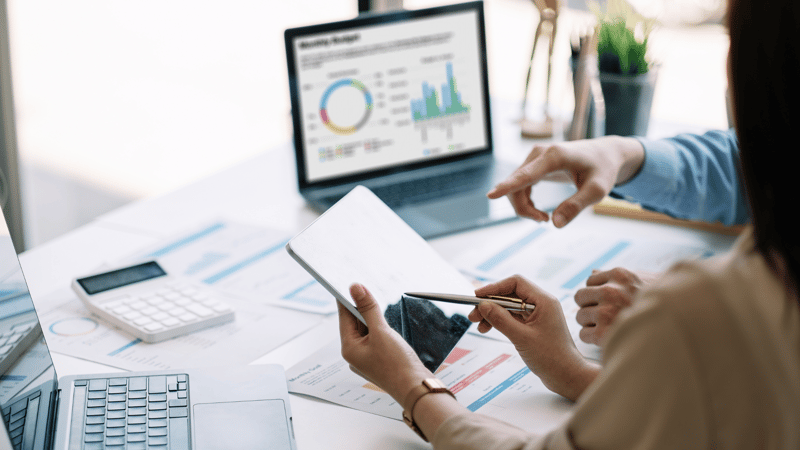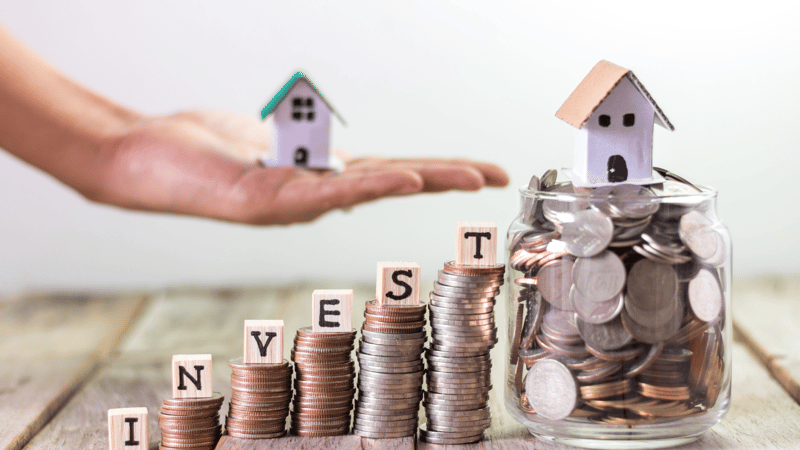In today's fast-paced real estate industry, managing multiple properties efficiently requires more than just traditional spreadsheets or generic software. Custom Property Management Dashboards offer a tailored approach, providing real-time insights and essential tools to streamline operations. From financial tracking to maintenance requests, these dashboards consolidate critical information into one intuitive interface, making property management smarter and more efficient.
Why Property Managers Need Custom Dashboards
Property management involves juggling multiple responsibilities, from lease tracking and rent collection to maintenance coordination and tenant communication. While generic property management software provides basic tools, it often lacks the flexibility needed for seamless operations. A custom property management dashboard consolidates all essential functions into a single platform, offering real-time insights and tailored features that align with a property manager’s specific workflow.
1. Real-Time Financial Insights
A custom property management dashboard gives instant access to financial data, eliminating the need for manual calculations or report generation. With real-time property analytics, managers can monitor revenue, track overdue rent, and assess operational expenses at a glance. The dashboard automates financial reporting, reducing errors and improving cash flow management, ensuring that every financial decision is backed by accurate, up-to-date data.
Key Benefits:
- Automated rent collection tracking
- Expense categorization and budget monitoring
- Instant financial reports for informed decision-making
2. Streamlined Tenant Communication
Clear communication enhances tenant relationships and ensures smooth property operations. A custom property management dashboard integrates tenant communication tools, enabling managers to send updates, receive maintenance requests, and handle lease renewals effortlessly. Automated notifications for rent reminders and policy updates reduce misunderstandings, leading to better tenant satisfaction and retention. A centralized platform keeps all interactions documented for future reference.
Key Benefits:
- Centralized tenant messaging system
- Automated reminders for rent and lease renewals
- Quick access to past interactions and issue history
3. Maintenance and Service Request Tracking
Handling maintenance efficiently is crucial for tenant satisfaction and property upkeep. A custom property management dashboard allows property managers to track service requests in real time, assign vendors, and set priority levels. Automated status updates keep tenants informed, while integrated work order tracking ensures that no request is overlooked. This proactive approach helps reduce costly repairs and maintain property value.
Key Benefits:
- Maintenance request automation
- Vendor management and service tracking
- Status updates to keep tenants informed
4. Portfolio Performance Overview
Managing multiple properties requires a data-driven approach. A custom property management dashboard offers real-time property analytics, displaying key performance indicators (KPIs) such as occupancy rates, lease expirations, and rental revenue trends. This birds-eye view helps managers identify underperforming properties, optimize pricing strategies, and forecast future growth. Custom reports provide insights that drive smarter business decisions.
Key Benefits:
- Occupancy tracking and vacancy alerts
- Lease renewal forecasting
- Property performance comparisons across locations
5. Customizable Data and Reports
Every property management business operates differently, requiring unique data insights. Unlike generic property management software, a custom property management dashboard allows managers to filter and customize reports based on their needs. Whether tracking expenses, tenant behavior, or maintenance costs, these dashboards offer interactive charts, exportable reports, and user-defined metrics, ensuring data is presented in the most useful format.
Key Benefits:
- Custom filters for specific property metrics
- Exportable reports for accounting and tax purposes
- Interactive charts and graphs for better insights

Benefits of Using a Custom Dashboard
A custom dashboard significantly reduces the time property managers spend navigating through multiple spreadsheets and separate reports. Instead of manually compiling data from different sources, a centralized dashboard provides instant access to key information, streamlining daily operations and improving productivity. With all essential metrics displayed in one place, managers can quickly assess financial performance, tenant status, and maintenance requests without switching between different systems.
Accuracy is another major advantage of using a well-structured dashboard. Manually tracking finances, lease agreements, and service requests often leads to errors, such as missed payments or overlooked maintenance tasks. A custom dashboard minimizes such risks by automating data entry, offering real-time updates, and flagging discrepancies. This ensures property managers can make well-informed decisions with reliable data, ultimately reducing financial mismanagement and operational inefficiencies.
Beyond internal efficiency, a custom dashboard also enhances tenant satisfaction by improving communication and service response times. Tenants expect prompt resolutions for maintenance issues, clear updates on lease terms, and an easy way to manage their payments. A well-integrated dashboard enables managers to address tenant concerns swiftly by providing instant notifications, tracking service requests, and ensuring timely responses. This level of responsiveness fosters a better tenant experience, leading to increased lease renewals and positive relationships between property managers and residents.
How to Choose the Right Dashboard for Your Needs
1. Usability: A Dashboard That Works for You
A well-designed dashboard should simplify daily operations with an intuitive interface and easy navigation. It should minimize the learning curve, ensuring that property managers, leasing agents, and maintenance staff can quickly access essential data. Customizable views and widgets help tailor the experience, ensuring each user gets relevant insights without unnecessary clutter.
2. Integration with Existing Software
A dashboard should seamlessly connect with essential tools like accounting software, tenant portals, maintenance tracking systems, and leasing platforms. Integration reduces manual data entry, improves workflow efficiency, and ensures accurate financial tracking. When a dashboard connects with tenant communication systems and property listing sites, it streamlines operations and enhances the overall property management experience.
3. Scalability: Future-Proofing Your Property Management
As your portfolio expands, the dashboard should scale effortlessly. It must support multiple properties, allowing centralized management without performance issues. A modular design enables adding or removing features based on evolving needs. Cloud-based solutions provide remote access and automatic updates, ensuring long-term adaptability while eliminating the need for costly system overhauls as business demands grow.
4. Customization Options: Tailoring Data to Your Needs
A rigid, one-size-fits-all dashboard limits efficiency. Customization allows property managers to display key performance indicators relevant to their roles, such as occupancy rates, revenue tracking, and overdue rent. The ability to adjust data views, reports, and notifications ensures that users only see what matters most, reducing distractions and improving decision-making in property management.
5. Mobile Accessibility: Managing Properties On the Go
A mobile-friendly dashboard enables property managers to oversee operations anytime, anywhere. Whether reviewing maintenance requests, tracking rent payments, or communicating with tenants, mobile access ensures real-time responsiveness. A dashboard with a dedicated mobile app or a responsive web interface improves efficiency by keeping critical information available, even when working remotely or handling on-site tasks.
6. Data Security and Compliance
Property management involves handling sensitive data, including tenant information, lease agreements, and financial records. A secure dashboard should have encryption, multi-factor authentication, and access controls to protect against breaches. Additionally, compliance with industry regulations like GDPR or local housing laws ensures legal adherence. Strong security features safeguard data, minimizing risks of unauthorized access or cyber threats.
7. Reporting and Analytics: Making Data-Driven Decisions
A powerful dashboard should offer real-time insights and comprehensive reports on key metrics such as revenue trends, occupancy rates, and maintenance costs. Advanced analytics help identify areas for improvement, predict future trends, and optimize operations. Customizable reporting tools ensure property managers receive actionable data, allowing them to make strategic decisions that drive profitability and efficiency.
8. Automation Features: Reducing Manual Workloads
An effective dashboard should automate routine property management tasks, such as rent collection reminders, lease renewals, and maintenance scheduling. Automation reduces human error, saves time, and ensures timely follow-ups with tenants and vendors. With workflow automation, property managers can focus on strategic planning rather than manual data entry and repetitive administrative duties.
9. Multi-User Access and Role-Based Permissions
A property management dashboard should support multiple users with role-based access control. Community managers, leasing agents, accountants, and maintenance staff should have different levels of access based on their responsibilities. This ensures that employees only see relevant data while maintaining security and preventing unauthorized changes, leading to a more organized and efficient management system.
10. Customer Support and Continuous Updates
Reliable customer support is essential for troubleshooting issues and optimizing dashboard usage. A dashboard provider should offer prompt assistance via live chat, email, or phone. Additionally, continuous software updates ensure the platform remains efficient, secure, and equipped with the latest features. Choosing a dashboard with ongoing support and enhancements guarantees long-term usability and adaptability.
The Bottom Line
A custom property management dashboard is more than just a convenience—it’s a necessity in today’s fast-paced real estate environment. By integrating property management software, real-time property analytics, and tenant communication tools, managers can gain full control over their operations, streamline workflows, and enhance tenant satisfaction.
Whether you’re overseeing a single building or a multi-property portfolio, having the right insights at a glance can make all the difference.















